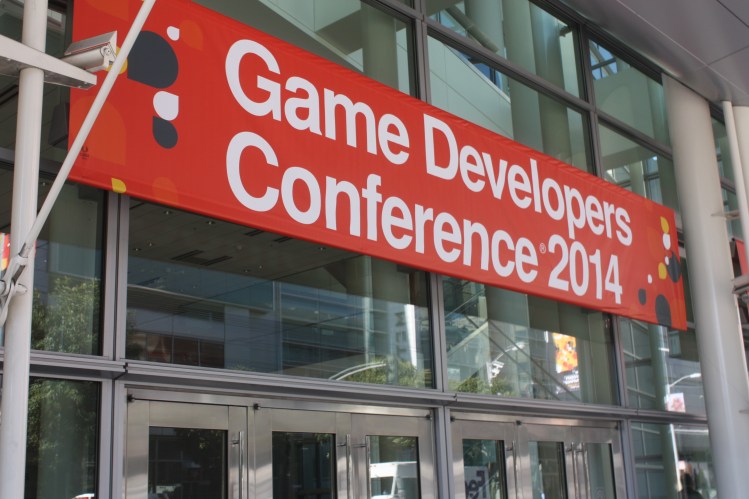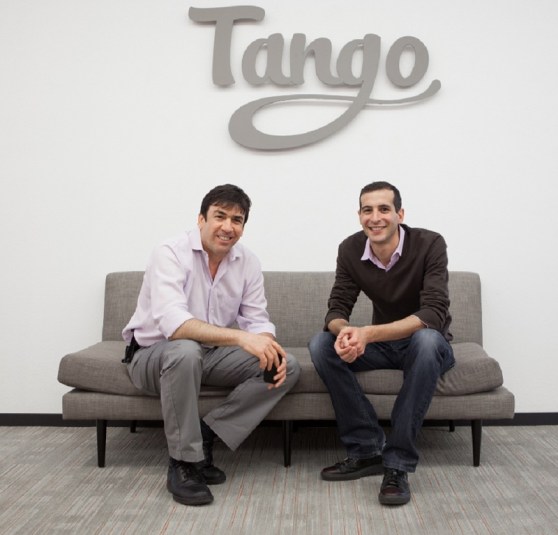There are other kinds of arbitrage. When users move to a new platform, an opportunity arises. Don Mattrick, the CEO of Zynga, told me in an interview that Zynga didn’t succeed with FarmVille on mobile, and that left an opening for Supercell’s Hay Day. When a platform changes dramatically, moving new content to that platform isn’t copying. It is basically starting the race over again from ground zero. Anything can happen. Bejeweled took off on the casual web and the PC. But King’s Candy Crush beat Bejeweled first on social networks and then on mobile. King played the arbitrage game better.
Who is the most efficient at making games? How many people do you need to make great games?
These are some very vexing questions.
Game design is, of course, entirely unpredictable. You never know what kind of game will be a hit. You can only monitor the process of making a game and turn the dials until you think it is just right.
But it is a little comical to apply some numbers analysis in the same way that Wall Street analysts look at the efficiencies of businesses. One metric they look at is revenue per employee. The more money you make from one person, the better you are.
King had 665 employees as of Dec. 31, 2013. With $1.8 billion in revenues in 2013, King had $2.83 million in revenue per employee.
When Zynga went public, it had roughly 3,000 employees and $1 billion in revenue, or about $333,000 in revenue per employee.
So King appears to be much more efficient in that respect, and it has been cautious about hiring too many people. Zynga, by comparison, has had to cut back by about a third on its headcount as its revenue stalled. GungHo Entertainment, with about 700 employees and $1.6 billion in revenue, has about $2.2 million in revenue per employee.
Supercell has about 190 employees and 2013 revenues of $892 million. That adds up to $4.69 million in revenue per employee. It doesn’t get much better than that. Supercell should hire more people.
But who is the most efficient of all?
Flappy Bird. That’s right, dotgears, which is owned by one guy, Dong Nguyen, a lone developer in Hanoi, Vietnam. He created a game that was generating $50,000 a day before he pulled the plug on it. And as we know from an article in Rolling Stone, the announcement that he was pulling the plug caused 10 million people to download the app. And he continues to make money from those people. If he makes $50,000 a day for a full year, then he is the most efficient of all at $18.25 million per employee.
When Zynga had 3,000 employees, it had 150 people with the title of game designer. It had enough people to make 150 games with maybe 10 or 20 people on each game. Somehow, they fell behind. King made Candy Crush with three people. It now takes about 40 people to maintain the updates for Candy Crush. Supercell’s name comes from the fact that it divides itself up into cells, or teams of around five people, and iterates on its games over and over. It is shipping its third game in four years sometime soon. Machine Zone made a calculated bet of putting 80 of its 95 employees to work for 19 months on Game of War: Fire Age. It also raised money to finish the game. That has paid off in a title that has been in the top-grossing ranks for months.
The math doesn’t always work. Games are a hit-driven business. The question will always come down to who is a hit factory, and who is a one-hit wonder?
The way to figure this out is to look at the details. Is the company applying the art of craftsmanship to its games? Is it iterating, testing, and ruthlessly revising its games? Does it have the best and most experienced talent? If you look at King, it is turning out one Saga game after another, each with hundreds of levels. It is trying to be very methodical about how it makes its games.
Who is going to grow?
Here are my thoughts on the hottest trends. Mobile messaging networks are hot, as Facebook’s $16 billion purchase of WhatsApp suggests. Kakao, Line, and WeChat are gathering hundreds of millions of users in Asia, and many of those are playing games. They are succeeding in part because they have fast wireless broadband. But they are also winning because it has become so easy to quickly access and play games on these networks. On the promise of better games on top of its mobile messaging network, Tango raised $280 million from investors including Asia’s Alibaba.
Another hot trend is livestreaming games on Twitch. Twitch accounts for 1.8 percent of the traffic on the internet now. It is a powerful, mainstream medium that reflects the rise of gaming and eSports. About 68 percent of those Twitch viewers are dialing down their TV watching time. Raptr found that when League of Legends added spectator mode, it saw skyrocketing retention.
Another clear winner is community in games. Eve Online is an example of this. This 10-year-old sci-fi online game is still making headlines. In one giant battle, $300,000 to $500,000 in real-money investments in spaceships was wiped out over the course of 21 hours in a fight that involved 7,548 players.
But how do you measure the value of community? Ninja Metrics has an interesting take. Dmitri Williams, their CEO, says that you can classify some players as “social whales.” These people may not spend any money in a game. But they are social and they get a lot of people to come back into the game. They are great for retention. Social whales are influencers. They are 10 percent of the population, but they drive 60 percent of the value. How do you make money? It’s the community, stupid.
If you deliver incentives to those social whales, you’ll get results. Now we have seen a lot of angst about the rising cost of user acquisition. SuperData Research warned of a bloodbath among mobile developers because the cost of acquiring a new user was above the average revenue from a user, or $2.73 in cost back in December to about $1.96 in revenue.
But there’s a few people who are asking a smart question, like at the startup Yvolver, run by Steve Nix. Why don’t you focus on the gamers you already have?
Hal Brierley is a loyalty rewards guru who has been designing rewards programs like AAdvantage, Hilton Honors, and GameStop Power Up Rewards for three decades. He advises Yvolver, and he says that it is six times more effective to keep a customer than to acquire a new one. So Yvolver is figuring out reward programs that will keep people coming back to games. That will improve engagement, and that will lead to better monetization.
Now Yvolver hasn’t fully explored this territory yet. Brierley likes to point out that we have become an incentive-based society. Credit cards and travel rewards have changed us. If you design the right incentive, the pay off is huge. But remember there’s a difference between intrinsic rewards, which are more genuine and have a bigger impact, and extrinsic rewards, which are relatively shallow.
So what’s the logical extension of Brierley’s thinking? Who is going to pay me to play games? I don’t want some reward I’m never going to cash in. I want to get some money in exchange for my addiction.
Now that is kind of funny. But that brings us to our final question.
Is there a dark side to the industry?
Real-money gambling is highly regulated because it can be so addictive. You can lose your house, and the authorities and the newspapers will blame the online gambling companies if that happens. By extension, game companies will want to make their games addictive, but not too addictive. Nobody really wants to make money off someone’s habit, except drug dealers.
Paul Gardner of the Osborne Clark law firm warned at Casual Connect Europe that, because of the excesses of overly aggressive monetization in the game industry, policy makers are about to regulate virtual goods.
Some of this has to do with protecting kids and parents, so that you don’t see your credit card bill littered with $99 Smurfberry purchases. UK regulators found in a study that game makers should be more transparent and accurate about costs in a game. If you hit level 11 of a game and you discover you have to make an in-app purchase to proceed, then why didn’t the developer tell you that up front?
I have covered a few player rebellions as companies like Zynga sunset their games and give very little notice to players that it’s going to happen. They might have bought a ton of virtual goods, and, when the game faces being shut down, their only recompense is getting some virtual goods in another game that they don’t want to play. I’ve seen these rebellions happen at companies like Game Insight and Kabam. Everybody can get blindsided here.
I became a whale in a Kabam game purely by accident, because I accidentally hit a very large button on my screen that let me instantly buy Mithril. Peter Molyneux, head of 22cans and the creator of the Fable series, said it was shameful how developers are exploiting gamers. We have hard monetization walls. We have pay to win. We have great targeting that risks invading privacy.
Here is a prediction about free-to-play gaming: Every game company that decides to betray its users and make mid-course changes to policies on virtual goods is going to face a player rebellion.
Jade Raymond, who makes AAA games at Ubisoft, said at a dinner at GDC, “Don’t treat your customers like rats going through a maze to get a piece of cheese.”
A lot of my talk has been about this fascination with money and keeping score. But my message at the close of this talk is to say that you should be aware of your responsibility.
Bruce McMillan, a former EA executive, once said here at the GDC that in a 30-year career, you will only get a chance to make a game once every three years. So you may only get the chance to do 10 games in your career. We can change that math now. With mobile games, you can make a lot more. But Bruce’s point is still true. You should make every game special.
As Jamil Moledina, the former head of the GDC and now a game guy at Google, recently told me, your obligation is to innovate. In a world full of copying, that’s not easy to do. But whenever you make your game or design your monetization, make a contribution to innovation.
VentureBeat's mission is to be a digital town square for technical decision-makers to gain knowledge about transformative enterprise technology and transact. Learn More











![Reblog this post [with Zemanta]](http://img.zemanta.com/reblog_e.png?x-id=2286ed7f-0cfc-4fe8-b3e9-7b1c336c51a1)
